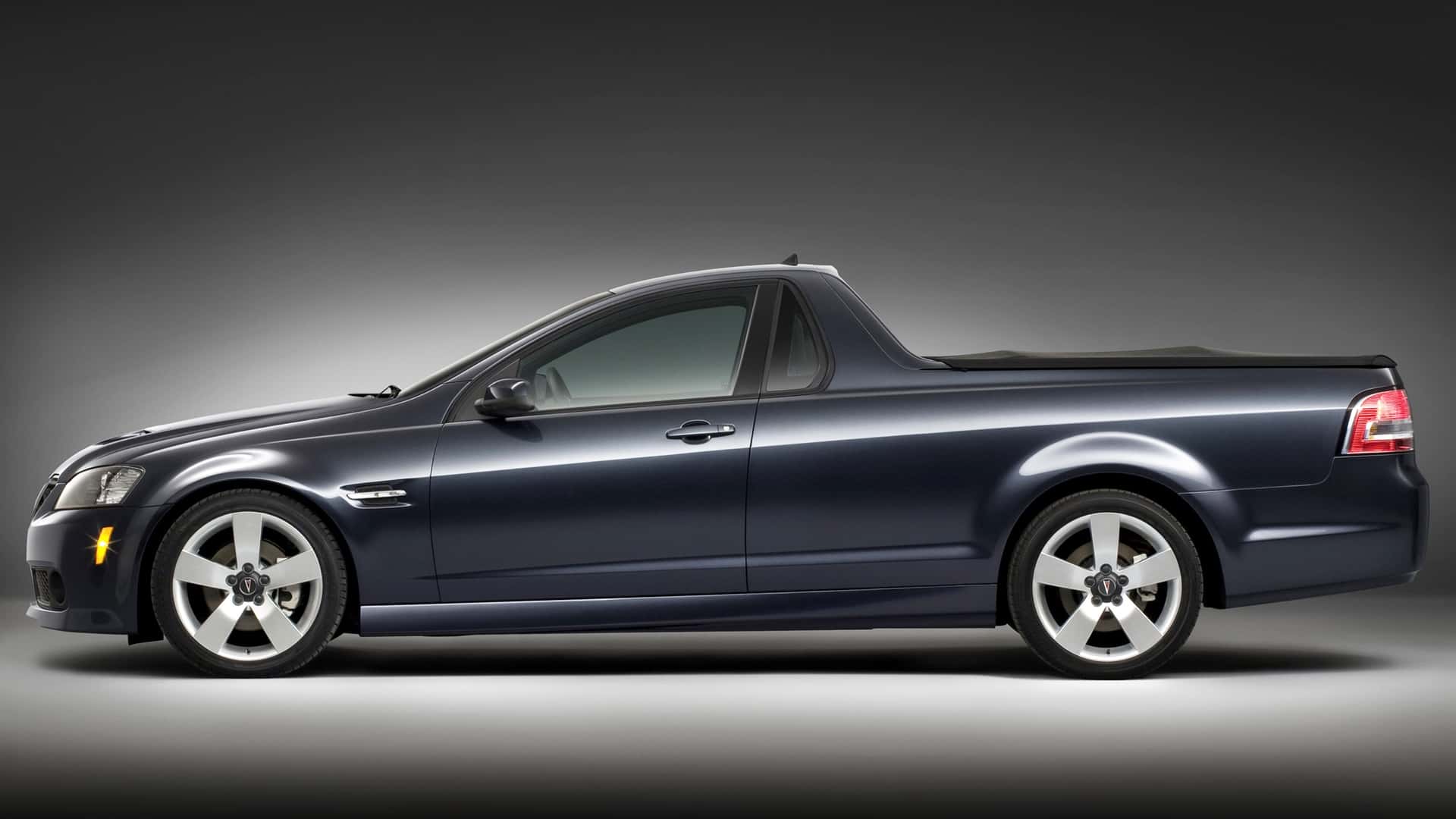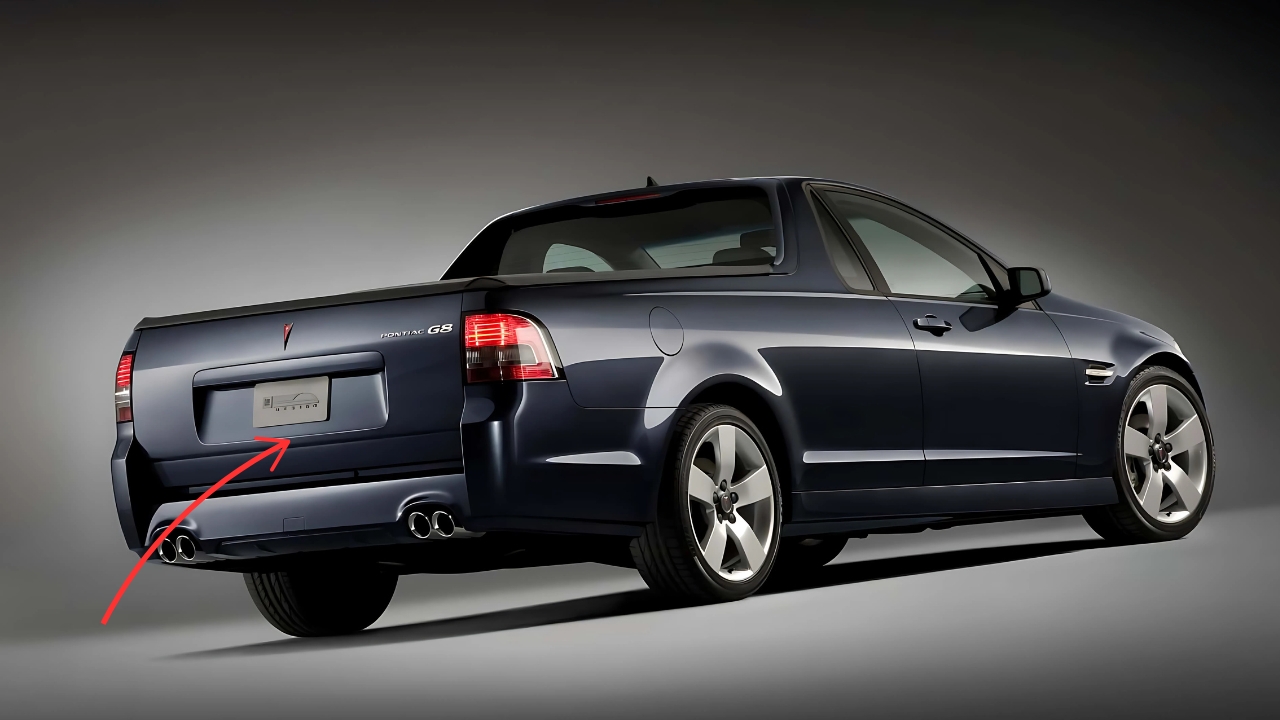The ghost of Pontiac continues to haunt car enthusiasts everywhere. General Motors (GM )recently renewed the trademark for this beloved brand, but don’t get your hopes up for a real comeback.
This move has nothing to do with bringing back those legendary muscle cars we all miss. Instead, it’s just legal paperwork to keep selling hub caps and license plate frames with the Pontiac name.
The Trademark Game That Breaks Hearts
Car companies play this game all the time. They renew old trademarks to prevent competitors from snatching up famous names, and that’s exactly what’s happening here.
The April 2025 filing covers boring stuff like vehicle horns and novelty accessories. It doesn’t mention anything about new cars, engines, or performance models that made Pontiac special.
Think about it this way – if GM let the trademark expire, some random company could grab it. Then they might slap the Pontiac name on cheap car parts or, worse yet, completely different products that would tarnish the brand’s racing heritage.
What This Really Means for Fans
Pontiac enthusiasts have been dreaming of a comeback since 2010 when the brand died. Every trademark renewal gets their hearts racing, but this one’s different because it’s so specific about mundane car accessories.
The filing mentions hubcaps, horns, and license plate frames – not exactly the stuff of V8 dreams and burning rubber. This suggests GM wants to keep making money from Pontiac merchandise without investing in actual vehicle development.
The Fake Ad That Fooled Everyone
Remember that “Pontiac Is Back” advertisement that appeared in Car and Driver magazine last year? It got thousands of people excited until they read the fine print saying it was just a joke.
That ad talked about a hybrid with a 667-horsepower supercharged V8, which sounds amazing until you realize it was describing a regular starter motor as the “electric assistance.” The whole thing was clever wordplay designed to get attention, and boy did it work.
Why Pontiac Really Died in the First Place
Let’s be honest about what killed Pontiac. The brand had been losing money for years before GM’s bankruptcy, and there were good reasons for that decline.
By the end, Pontiac was mostly selling rebadged Chevrolet vehicles at lower prices than the original Chevy models. This strategy hurt both brands and confused customers who couldn’t figure out what made a Pontiac special anymore.
The Business Case That Sealed the Deal
When GM faced bankruptcy in 2009, they had to make tough choices about which brands to keep. Buick survived because it was profitable and popular in China, while Pontiac got the axe despite its rich history.
Susan Docherty, who was GM’s Vice President of U.S. Sales at the time, later explained that passionate teams tried to save Pontiac but couldn’t find any scenarios that would make it profitable. Sometimes business reality trumps emotional attachment.
The Performance Legacy That Won’t Return
Pontiac built its reputation on muscle cars and performance vehicles during the golden age of American automotive power. Models like the GTO, Firebird, and Trans Am became icons of speed and style.
But today’s automotive world is completely different. GM is focused on electric vehicles and fuel efficiency, not the gas-guzzling performance machines that made Pontiac famous in the first place.
Current GM Strategy Leaves No Room for Pontiac

Mary Barra’s leadership has transformed GM into a leaner, more focused company. They’ve streamlined down to just four brands in North America: Chevrolet, Cadillac, GMC, and Buick.
This strategy makes sense from a business perspective. Instead of spreading resources across multiple brands with overlapping missions, GM can invest more heavily in making each remaining brand stronger and more competitive.
The Electric Future Doesn’t Need Pontiac
GM’s push toward electrification presents another challenge for any potential Pontiac revival. The brand’s identity was built around loud, powerful gasoline engines that thrilled driving enthusiasts.
An electric Pontiac just wouldn’t feel authentic to the brand’s core values. Sure, electric motors can produce incredible acceleration, but they lack the rumbling exhaust notes and visceral experience that defined classic Pontiacs.
Why Enthusiasts Keep Hoping Anyway
Despite all the evidence against a Pontiac return, fans refuse to give up hope. Thousands of classic Pontiacs remain on the road, and their owners form a dedicated community that keeps the brand’s memory alive.
These enthusiasts argue that GM needs more excitement in its current lineup. Most of their vehicles are practical crossovers and sedans that prioritize efficiency over thrills, leaving a gap in the market for true performance cars.
The Merchandise Money Trail
Here’s what GM is actually doing with the Pontiac name – cashing in on nostalgia through licensed merchandise and accessories. This approach lets them profit from the brand without the massive investment required for new vehicle development.
Think about all those Pontiac owners who still drive their cars daily. They need replacement parts, accessories, and branded merchandise to maintain and personalize their vehicles, creating a steady revenue stream for GM.
Aftermarket Demand Stays Strong
The aftermarket for classic Pontiacs remains surprisingly robust. Restoration shops, parts suppliers, and custom builders all rely on the continued availability of Pontiac-branded components.
By maintaining the trademark, GM ensures they can continue licensing the name to legitimate parts manufacturers while blocking counterfeit operations that might damage the brand’s reputation.
Collector Car Values Keep Rising
Original Pontiac muscle cars have become serious investment vehicles in recent years. A pristine GTO or Trans Am can sell for six figures at auction, proving that the brand’s legacy has real financial value.
This collector market needs authentic replacement parts and restoration services to maintain these valuable vehicles, creating ongoing demand for Pontiac-branded components and accessories.
What Car Enthusiasts Really Want
The automotive landscape has changed dramatically since Pontiac’s demise. Most new cars prioritize fuel economy, safety, and technology over pure driving excitement, leaving enthusiasts feeling left out.
This creates an opportunity for any automaker willing to build affordable performance cars that recapture the spirit of classic muscle cars. Unfortunately, GM seems more interested in practical electric vehicles than emotional driving machines.
The Missing Middle Ground
Today’s performance car market splits between expensive exotic cars and budget-friendly sports cars with limited power. There’s a gap where Pontiac used to live – affordable vehicles with serious performance that regular people could actually buy.
Brands like Dodge filled some of this void with the Challenger and Charger, but even those are being discontinued in favor of electric alternatives. This leaves fewer options for enthusiasts who want traditional V8 power.
Why GM Won’t Take the Risk
Building a new performance brand requires massive investment in research, development, manufacturing, and marketing. GM would need to create unique vehicles that couldn’t just be badge-engineered versions of existing models.
The business case gets even harder when you consider that performance cars represent a tiny slice of total vehicle sales. Most buyers want practical transportation, not weekend track toys, making it difficult to justify the investment.
The Reality Check Nobody Wants to Hear
Let’s face facts – Pontiac isn’t coming back as a vehicle manufacturer, and that’s probably for the best. The automotive world has moved beyond the brand’s core competencies, and trying to resurrect it would likely disappoint everyone involved.
Instead of hoping for an impossible revival, enthusiasts should focus on preserving and enjoying the classic Pontiacs that still exist. These vehicles represent automotive history that deserves respect and proper care.
Keeping the Spirit Alive
The real Pontiac legacy lives on in the passion and dedication of owners who maintain classic models. Car shows, racing events, and online communities ensure that future generations will understand what made these vehicles special.
Maybe that’s enough. Sometimes the best way to honor a brand’s memory is to let it rest in peace rather than risk diluting its reputation with inferior modern interpretations.
Learning from History
Pontiac’s rise and fall offers valuable lessons about brand identity, market positioning, and customer loyalty. The brand succeeded when it offered unique value propositions and failed when it became just another way to sell the same cars.
Modern automakers should study this history carefully. In today’s competitive market, authentic brand identity matters more than ever, and companies that forget their core values risk losing everything that made them special.
Frequently Asked Questions
Is Pontiac really coming back as a car brand? No, GM has no plans to revive Pontiac as a vehicle manufacturer despite renewing the trademark.
Why did GM renew the Pontiac trademark? To maintain control over the name for merchandise, accessories, and prevent competitors from using it.
What was the “Pontiac Is Back” ad about? It was a joke advertisement in Car and Driver magazine that wasn’t affiliated with GM’s actual plans.
The Pontiac name will live on through trademark filings and merchandise sales, but the dream of new muscle cars bearing those distinctive arrowhead badges remains just that – a dream. Sometimes the past should stay in the past, preserved in our memories and the classic cars that still roam our streets.

